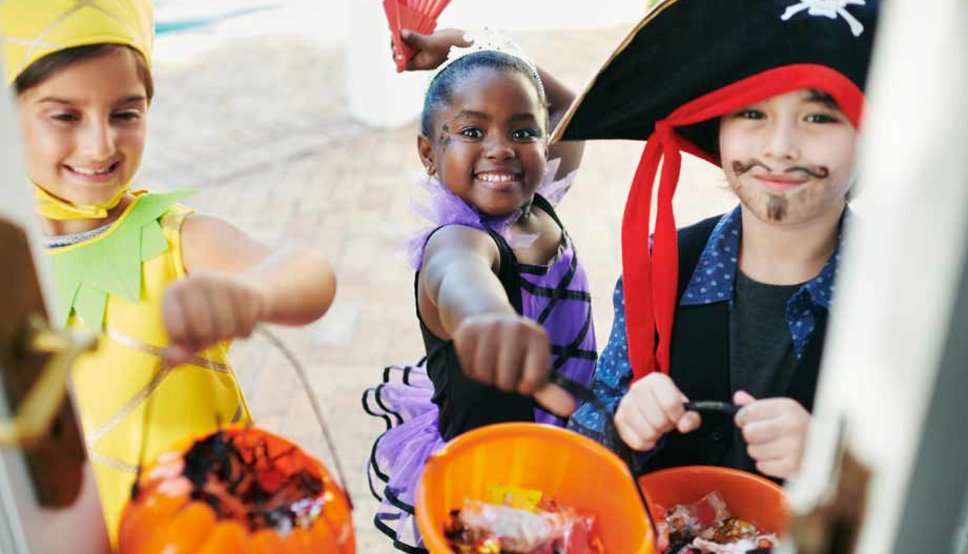Halloween Safety Tips for a Fun and Festive Holiday

Halloween is almost here! You might be surprised to know that many of the Halloween traditions we practice today have been around for a long time, including wearing costumes and the basics of trick or treating. These safety tips will help you celebrate the spooky season safely.
Trick or treating safety
Getting dressed up and running around the neighborhood to get treats is a great time! These ideas will help maximize the treats to tricks (or trips to the doctor's office) ratio.
Know when and where you're going
Take the time to map out your route in advance. If you're sticking to your neighborhood, maybe the plan is to only make right turns, to minimize the number of times you and your child have to cross a street. If you have very small children, going out before the sun sets ensures that they can be seen more easily by motorists. Going out after dark? Map out a route that has plenty of street lights and bring a flashlight with fresh batteries just in case.
If your neighborhood doesn't have sidewalks, or isn't well lit, consider finding a "trunk or treat" event or other smaller, more localized option.
Consider Halloween costumes carefully
Choosing what to be for Halloween is probably the most nerve-wracking part of the whole process. But once you and your child have narrowed down the costume choice, it's time to look at it with safety in mind. Make sure that your child's costume is comfortable and well-fitting. Add reflective tape if you're going to be out walking. Check for hard or pointy objects that could present a danger if a child trips and falls. Comfortable sneakers are the best option for walking around a lot, and if the costume comes with shoe coverings, make sure they stay securely fastened to avoid tripping (or leave them off entirely).
Some costumes come with face masks, which might be okay in certain instances, but they can limit your child's vision and get hot and uncomfortable. FDA-approved face paint or makeup is a good alternative to wearing a mask. Avoid decorative contact lenses, as they can cause eye infections.
Spooky strangers
There can be a lot of people out and about during trick or treating times. Make sure your children know the importance of staying with their groups and not wandering off. Enacting a buddy system can help. And emphasize the importance of not going into a stranger's house, even if invited—stay outside the door.
Making the most of Halloween treats
For most kids, it's probably a toss-up as to which is their favorite part of Halloween—getting to dress up or getting a lot of sweets.
Pumpkin decorating safety
Carving pumpkins is a long-standing tradition and can be a lot of fun, when done safely, with older children. With younger kids, decorating the pumpkin exteriors is the safer route. You can use markers, finger paints, large buttons, and a variety of other kid-friendly decorating items to create frightful sculptures and fun memories.
Keep food allergies in mind
To a parent of a child with food allergies, Halloween can be a particularly tricky time to navigate with the variety of candy options that may be presented. If you're going with a group of children, know the signs of a food allergy reaction to help watch all the children in the group. And when you're picking out what treats to give, having some non-food options on hand for kids with allergies can be a sweet thing to keep in mind.
Check the goodies your children bring home
Before your kids dive into their candy stashes, sit down with them to go through the goodies in their trick or treat bags. Look for items that may present allergy concerns or could be choking hazards, such as peanuts or gum. Make sure that none of the wrappers have been tampered with.
For more tips to having a safe and fun Halloween, visit the 4-Safety Halloween Safety for Kids webpage.
About the Author:
Brown University Health Blog Team
The Brown University Health Blog Team is working to provide you with timely and pertinent information that will help keep you and your family happy and healthy.
Find a Doctor

The right provider is in our network
Search more than 1,200 providers in our network.



